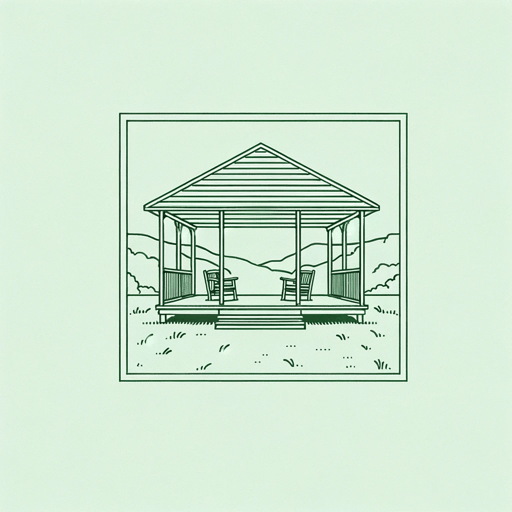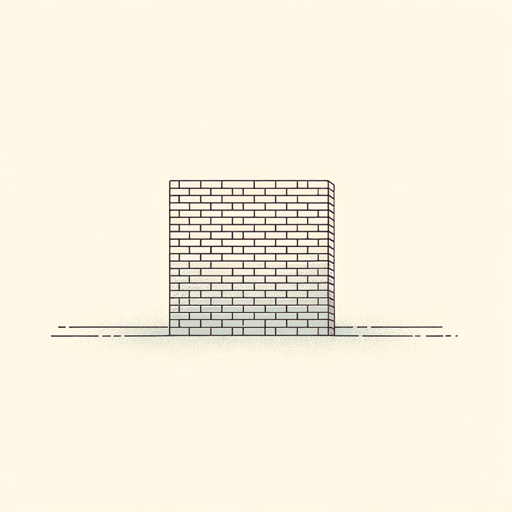36 pages • 1 hour read
Herman MelvilleThe Piazza
Fiction | Short Story | Adult | Published in 1856A modern alternative to SparkNotes and CliffsNotes, SuperSummary offers high-quality Study Guides with detailed chapter summaries and analysis of major themes, characters, and more.
Summary and Study Guide
Summary: “The Piazza”
Herman Melville’s “The Piazza,” first published in 1856, is a short story told in the first-person that unfolds at the author’s then-residence, Arrowhead, in Pittsfield, Massachusetts. This narrative, set in the genre of parodic Romanticism, explores themes of Sought Versus Involuntary Isolation, Appearance Versus Reality, and The Quest for Self-Discovery.
This guide uses the e-book version of The Piazza Tales published in 2005 and freely available on Project Gutenberg.
The story opens with the narrator describing his move to the countryside where he occupies an old-fashioned farmhouse that notably lacks a piazza. He expresses a fondness for piazzas, seeing them as spaces that blend indoor coziness with outdoor freedom, ideal for enjoying the picturesque country scenery that surrounds his new home. The area is so visually stunning that it frequently attracts artists who set up their easels to capture the landscape.
The narrator laments the absence of a piazza in such a beautifully located house, comparing it to a picture gallery without a bench. He waxes poetic about the ever-changing natural beauty of the hills, which he sees as natural art galleries displaying an ever-refreshing array of landscapes. He suggests that enjoying such beauty requires tranquility and an easy chair, much like a piazza or a church pew, for proper appreciation.
He initially considers constructing a panoramic piazza around the entire house but soon realizes it is impractical and too costly. He then deliberates on which side of the house to build the piazza. Ultimately, the narrator decides to build the piazza facing north, toward “Charlemagne.” Despite the cold and gusty conditions of the north side, especially in winter, the narrator finds a unique beauty and tranquility in this setting.
This setting also prompts him to recall his metaphorical journey to a fairyland, sparked by a glimpse of something unusual in the mountains, visible only under certain conditions of light and shadow. The spot seemed like a place where fairies might dance.
His interest in the spot is further piqued when he observes a golden sparkle there on a sunny morning, which he thinks could only come from glass, suggesting that the structure might be a cottage. Another day, he notices a broader gleam in the same direction, which he deduces must be from a newly shingled roof, confirming his suspicion of recent habitation.
During a period of convalescence in September, while sitting on the piazza, he becomes painfully aware of the decay in his surroundings, exemplified by the worms he finds in a Chinese creeper he had cultivated. This discovery disheartens him, but soon his attention is captured again by the sight of the “golden mountain-window,” which rekindles his fantasies about fairies and a mountain girl. Believing that visiting this place might cure his weariness, he resolves to embark on a journey to this mystical spot, seeking the end of the rainbow in his own fairy land.
As he travels, the narrator relies on natural guides to lead him to his destination. Roadside golden-rods, standing tall like guide-posts, seem to point him toward the golden window he seeks. His journey takes him through a sleepy, tranquil countryside, where even the cattle appear to wander in a dream-like state.
When he reaches the base of the fairy mountain, he does not immediately find the fairy ring he expects. Instead, he encounters a pastoral scene with a wise old ram, which leads him through a meadow filled with white-weed and forget-me-nots. The narrator is then guided by flights of yellow birds, which he perceives as pilots leading him toward his goal. The path becomes more challenging, taking him through a dark, forbidding wood, past an old, vine-enshrouded saw-mill, and alongside serene waters and rocky cascades.
Amidst the rocky landscape, he discovers a small, low-storied cottage with a peaked roof, resembling a nun’s cap. The cottage, nestled among the rocks, presents a contrasting appearance: one side of the roof shows deep weather stains and moss growth near the eaves, suggesting age and a long-standing integration with the natural environment. The other side, however, is newly shingled.
Upon reaching the cottage, the narrator sees a solitary young woman sewing at a window. The scene is marked by simplicity and solitude: The girl appears pale, the window is speckled with flies, and wasps hover around the repaired panes.
Invited inside by the girl, Marianna, the narrator enters a realm far removed from his fantasies. The cottage, in its state of decay, offers a different perspective. Looking through the window from within, the narrator sees the world outside anew—a soft, distant azure world that feels alien compared to the close reality of the cottage. Marianna’s conversation reveals her solitary existence with her brother, the only inhabitants of this isolated house on the mountain. Her life, devoid of visitors or passing travelers, is a stark embodiment of loneliness and unfulfilled dreams.
As they talk, Marianna points to a distant house in the valley, visible from the cottage window. To her, it appears as a beacon of happiness, a stark contrast to her own life of seclusion. Ironically, the narrator recognizes this distant house as his own residence. She speaks of her weariness, not caused by the view from the window but by her existence as Marianna. The narrator, in turn, reflects on his own perceptions and the stark differences between his imagined fairyland and the reality of Marianna’s world.
In the concluding part of “The Piazza,” the narrator resigns himself to a new understanding of his world. He finds contentment in the familiar surroundings of his piazza. This space becomes his sanctuary, a place where the everyday elements of nature transform into a performance of beauty and simplicity. However, this newfound appreciation of his immediate world is tinged with a poignant awareness of reality. Each night, the narrator is left to pace his piazza, haunted by the memory of Marianna and the stark reality her life represents.
Related Titles
By Herman Melville






